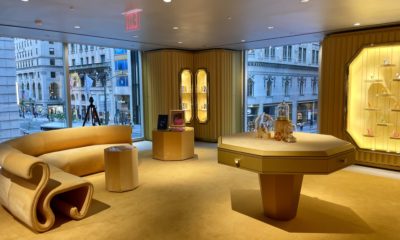It’s been well-documented that the Hispanic-American population is the most rapidly growing segment in the U.S. Less-well-documented is how retailers should address that market.
One thing is certain. It isn’t simply a question of how you design your stores. Hispanics’ needs are driven by issues far more complex than creating a culturally relevant decor. Burros and piñatas aren’t going to build and keep the loyalty of a market predicted to grow to $1.5 trillion in the next decade, when one in four Americans will consider themselves of Hispanic/Latino origin. You have to know and understand your customers, who they are, where they came from, what they want.
Hispanic-Americans come to the U.S. from countries throughout North, Central and South America and the Caribbean. And therein lie some important distinctions. Mexicans may not think, act or react like Puerto Ricans, Colombians, Cubans, Dominicans et al. But the differences don’t derive only from country of origin. There are cultural, generational and economic factors to consider, as well.
Generally, the first of any group that comes into the U.S. is driven by opportunity and the desire to bring families here for a better future. The key to success with the newly arrived is to provide solutions that meet their immediate needs and are provided in their native languages.
As they begin to integrate and the family expands – with children now educated in English – the cultural lines become blurred. Some are likely to shop anywhere that carries their preferred merchandise from the “old country.” Others seek out more-integrated environments that reflect their new multi-cultural experiences. Currently, in centers of large Hispanic populations, acculturation has taken on a new meaning. In these new population centers, “assimilation” has come to mean “fusion” – Mexicans wear Hollister apparel to Abuela’s traditional arroz con pollo Sunday lunch; Dominicans play a round of golf with Coronas and Cuban sandwiches. The experience is multi-cultural.
Economic Issues
Advertisement
Before retailers begin to analyze those cultural differences and similarities, they have to understand the economic drivers. There are primarily two types of Hispanics integrating into the U.S.: those who are coming here by choice and those by necessity. The first group, immigrating because they prefer the advantages of living in this country (or have chosen to leave for political reasons), tends to be mostly middle class and above. They have jobs, education and connections and have typical upper-middle class expectations for quality in products and services. They’re well-informed and eager to assimilate.
Those who come here by necessity are the less-educated working class and they view immigrating to the U.S. as the only way to achieve a better life than the one possible in their own countries. However, their U.S. experience may be their first encounter with consumerism. Their immediate needs revolve around learning where to shop for products and services. Like most working class shoppers, they place emphasis on price and value. But they’re also looking for familiarity and convenience. For them, language barriers represent real impediments. “Se habla Español” is not a cute catch-phrase for them; it’s a lifeline.
Cultural Issues
It’s important to note that there are tangible differences in cultural behavior from country to country and region to region, specific to food, music, clothing, etc. But are all Cubans extroverts? Are all Argentineans proud and confident? Are all Mexicans introverted? No more than all Americans are wealthy or political or interested in the Super Bowl.
Hispanics are widely known to have a “mañana” attitude. But what is the true nature behind that tendency? Let’s discard the notion that it’s mere laziness. Rather, it might be as simple as geography. Hispanics originate from warmer climates with longer growing seasons and therefore perceive themselves as having more time to accomplish things. They are comfortable with taking time to shop, making more trips to stores and shopping with others in mind. In their home countries, where they might have a small refrigerator and no car at all, they’re accustomed to more frequent shopping for fresh foods but small quantities. That’s one reason why Wal-Mart, with its load-up-your-basket mass-merchandise concept, failed in Latin America.
For the Hispanic consumer, shopping is a social event, a pleasurable family experience, rather than a chore. Music, interaction and food are important components of Hispanic life and should be included as part of the shopping experience. However, successful Hispanic marketing is not about dressing up an environment in a Halloween costume to look like it’s been transplanted. It’s not a soundtrack of mariachi music or graphics of happy farmers. It is about identifying economic, cultural and acculturation issues and understanding the motivation behind why people shop, what they buy and where.
Advertisement
As retailers increase their understanding of economic, cultural, and acculturation issues, they will be able to determine the kind of products and services that make sense to that target customer and how best to deliver them.
As this biggest of all American subcultures grows, the future environment might be fully integrated and bi-cultural, friendly to all, and seamless in communication – a place where it’s easy to access information in English and/or Spanish and where both increase the meaning and value of the other. In your store window, “Se habla Español” might mean more than your having the language skills to communicate – it might mean that you’ve learned to understand the culture, needs and habits of the Hispanic-Americans that you’re trying to reach.x
Juan Romero is president of api(+), a retail design firm based in Tampa, Fla. He will be presenting “Reaching the Hispanic Market,” at this year’s IRDC, Sept. 3-5 in Seattle. For more information, visit www.irdconline.com.

 Headlines2 weeks ago
Headlines2 weeks ago
 Headlines1 week ago
Headlines1 week ago
 Headlines2 weeks ago
Headlines2 weeks ago
 Headlines5 days ago
Headlines5 days ago
 Eric Feigenbaum4 days ago
Eric Feigenbaum4 days ago
 Headlines1 week ago
Headlines1 week ago
 Designer Dozen1 week ago
Designer Dozen1 week ago














